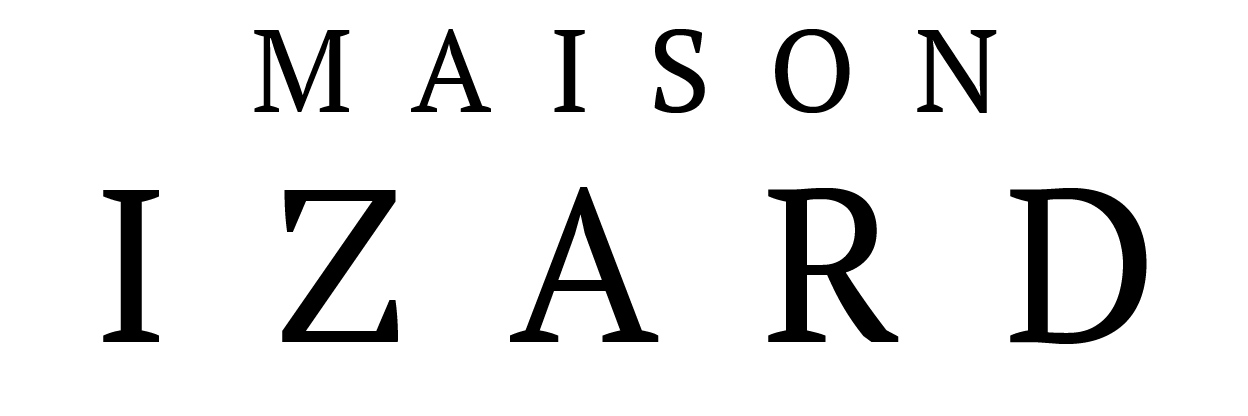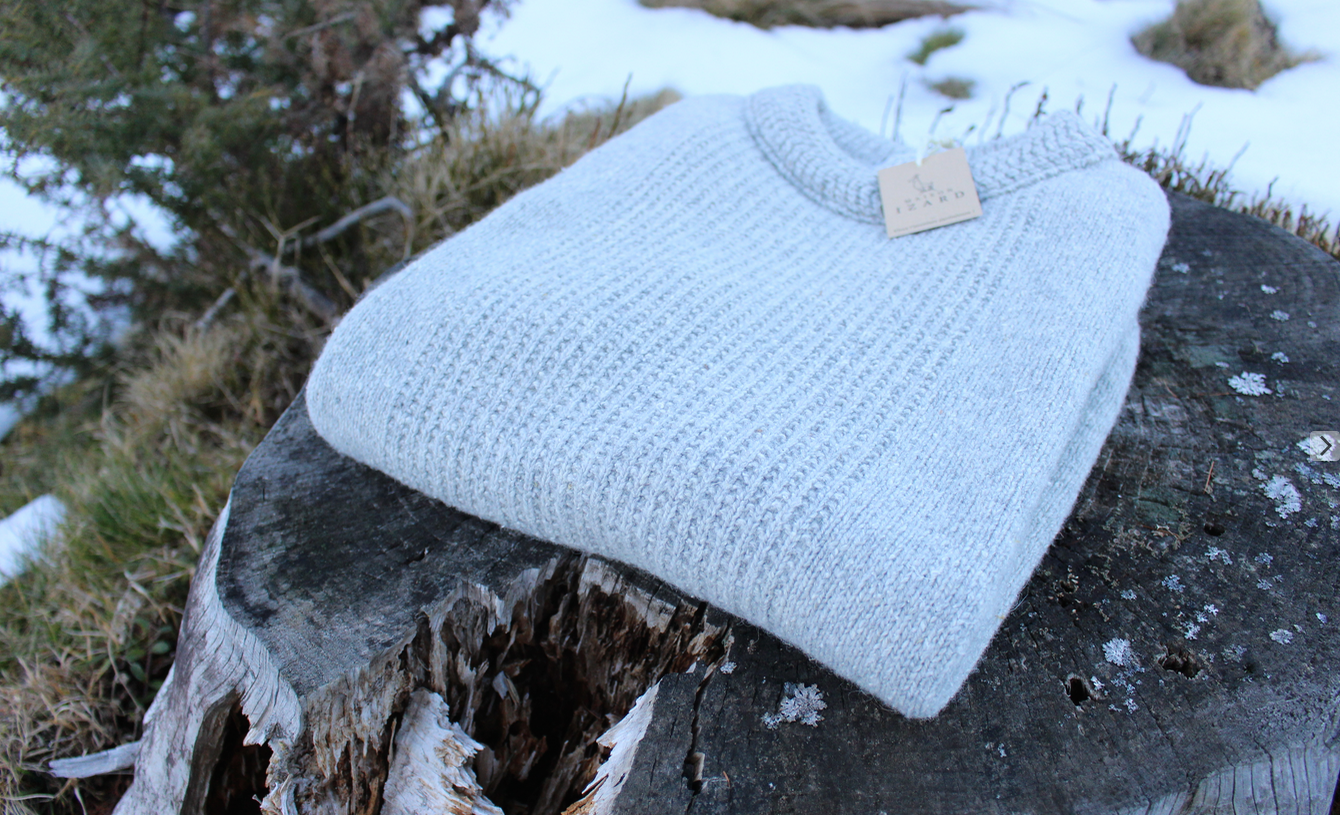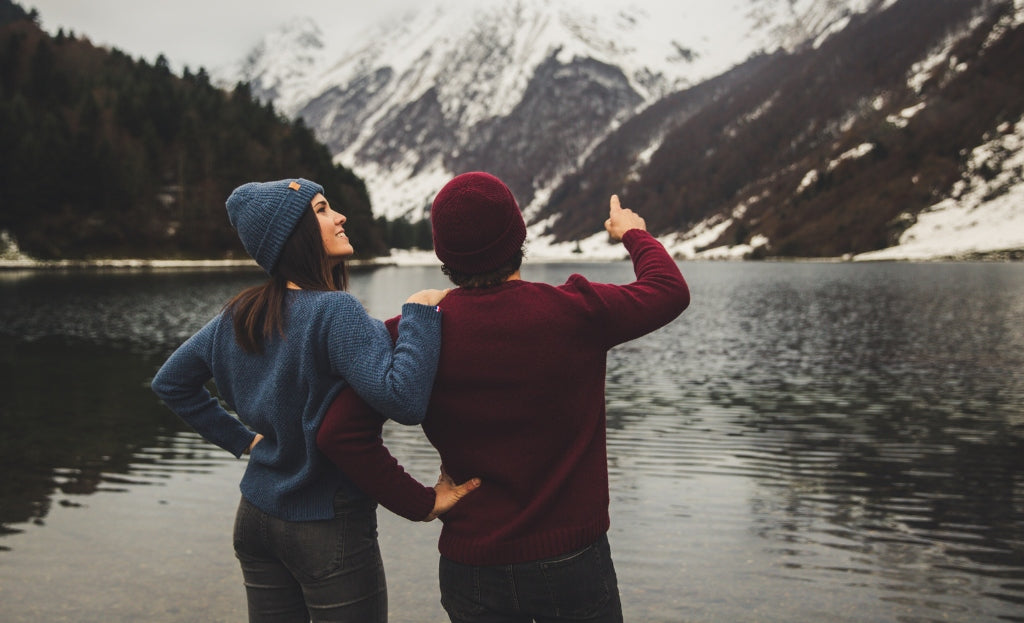Portrait: LUCAS SANTUCCI
We are very happy to introduce you to Lucas, our first ambassador!

Who is Lucas Santucci?
Lucas is an adventurer! He is so passionate about wide open spaces, nature and photography that he has made it his job. It is by accompanying explorers around the world that he leaves his hat as an agricultural engineer to become a photojournalist.
Today he is a reference in expedition reporting. His reports, via the Zeppelin agency, are broadcast in France or internationally in magazines such as Geo, Paris Match, VSD, National Geographic, or even Pyrénées magazine.
When he is not in his cabin in Counozouls, we find him camera in hand, under the ice floe in Greenland, in the middle of the mountains on the Pyrenean massif or in the middle of the Lut desert immortalizing exploits or progress. scientists.

At the school of rigor
In 2013, Lucas joined the Under The Pole team as logistics and partnership manager. He boarded a sailboat for an 18-month expedition to Greenland. He quickly established himself as a terrestrial and underwater photographer. After documenting 9 months of sailing which took him to 80° North, Lucas spent the winter caught in the ice, a few kilometers from a small village of hunters and fishermen. The extreme conditions encountered in the Arctic are a school of rigor and patience that does not forgive any human or material error. He is now one of the few photographers to have such a long polar experience in both underwater and terrestrial photography.

Hello Lucas, can you describe what your job consists of?
The objective of a photo report is to tell a story in several images, or to deal with a problem. The human being is omnipresent, because it is through the people who will be in the photos that the story is told. Finally I write very little, everything is in the pictures! Of course, I write a lot of captions and a presentation text, but it is mainly a magazine editor who will take all this information to write a text.

What is the daily life of a photo-journalist (if there is one!)
So yes my daily life is not routine, but there are still two aspects. The one where I'm on the pitch, with a lot of movement. This is of course the funniest part with a lot of encounters. We are incredibly lucky in reporting, we constantly meet new people who let us enter into their lives or into places that are often inaccessible...
The second part of the job, she is unfortunately in front of the computer with a telephone. In addition to the “editing” part of the report, there is all the upstream work with contacts and authorization requests. You have to imagine that this part of the office takes 70% of the time, but it's an incredible 30%!
Afterwards, in addition to that, we diversify our profession a little with training in photoreportage or the production of books, exhibitions, conferences...

What has been your most significant experience as a photojournalist?
I think it was during the 18 months I spent in Greenland for the Under The Pole expedition. Finally I was just starting photography and even more photojournalism. I was lucky enough to be able to leave for 3 days with Emmanuelle Périé-Bardout, to follow a seal hunter and document his life. You have to imagine that up there they almost only have hunting and fishing to live on. Nothing grows on these pebbles. For three days he opened up his life to us, and showed the difficulties of hunting with negative temperatures, a pack of dogs to manage, and the difficulty of approaching in this world of ice. But he also shared with us the happiness he has of living simply, with nature in the incredible landscapes he has been seeing since he was a child. His vision made me think a lot about my desire to return to live simply in my Pyrenees.

His “quest” for the Desman of the Pyrenees
In 2016, after several reports such as Plastics Odyssey, 3000 meters blind or Expedition Adaptation , he went in search of the Desman of the Pyrenees. His goal: to take the first underwater photos of the mammal in its natural environment. Thanks to his research punctuated by encounters, he accumulates a multitude of information which he assembles in the form of a story and co-signs a book entitled Desman des Pyrénées .

Today you are co-signing a book on the Desman of the Pyrenees, what were your motivations and the main difficulties you encountered during your research?
Once again, it's like expeditions, it was a real childhood dream! Fifteen years ago, still a teenager, a hiker friend told me about an invisible animal that was the emblem of the Pyrenees: the Desman. Since then I have spent a lot of time observing the rivers. I even set up small “expeditions” with my cousin to go in search of the animal, but like many Pyreneans we have never seen it.
So life went on, I traveled, I became a photojournalist, and one day by the greatest of chance I met “the specialist of a small animal with a trunk that lives in the rivers of the Pyrenees”. That's how it was presented to me! And I think seeing my face my friends understood that something was happening! So I quickly sympathized with Frédéric who made me meet his colleague Mélanie and we decided to do a documentary work on their work as well as if possible the first underwater photographs of the animal...

So of course it was not easy, because a Desman is not so easily observed. Many people are still looking for it... And in addition to doing all this underwater! But with the help of scientists and good advice, I decided to go for it. Once again we needed a bunch of authorizations, because the spot was in the Pyrenees National Park where it is forbidden to take pictures. Once there, the scientists took me out into the field for a day and we quickly saw it. I thought it was going to be easier than expected. They then left me alone and I spent days hoping to see the animal without it showing. You have to imagine that it's not easy, I'm more than two hours away with diving suits and autonomy for several days. I thought about giving up.
Then I said to myself that it was necessary to be several to see the animal, alone I was not effective. I went back a few weeks later with friends. After some time we were able to see it and try to understand its movements to finally photograph and take the first underwater photographs!

What are your future projects?
For the future, there is a big promotion phase around the book on the Desman and the exhibition that goes with it. I'm on a lot of festivals and events.
On the reporting side, I work a little for Pyrénées Magazine and I have a big artist residency in Nimes at the beginning of 2019. I also continue reporting with the Zeppelin Agency , but for now it's secret!
As far as the Pyrenees are concerned, I want to continue my work on the Desman, there are plenty of mysteries to solve, but also better photograph the animal. And then, I don't forget to save a little time to take care of the vegetable garden in the Pyrenees...
Thanks Lucas!
You can follow Lucas' adventures on his Instagram page or on his website !
©images Lucas Santucci



